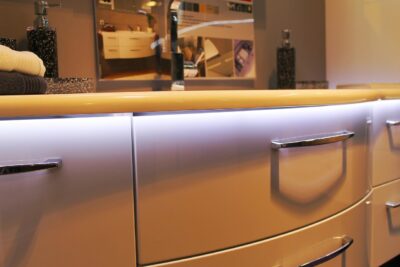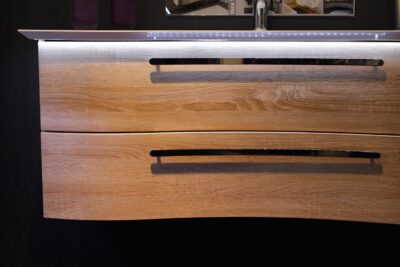
How to Retrofit Old LED Fixtures with Modern Covers
How to Retrofit Old LED Fixtures with Modern Covers By Aman | Updated on April 15th 2025 LED lighting has pretty much taken over the
Home » How to Extend the Life of Your LED Fixture with Proper Lens Maintenance
LED fixtures have changed the game when it comes to lighting. They’re energy-efficient, long-lasting, and sleek. But even the most advanced lighting systems need some TLC to keep them shining bright for years. Maintaining your LED fixture—especially the lens—can make a big difference in how well it performs and how long it lasts. If you’re thinking maintenance sounds boring, just think of it as the secret hack to saving money and getting better lighting.
When dust, debris, or grime builds up on your LED lenses, the light output dims, your energy bills creep up, and that new-fixture look fades fast. Regular upkeep not only saves energy but also reduces the frequency of replacing parts—cutting costs in the long run. Think of it like car maintenance: small efforts now, fewer headaches later.

Start with the best. Not all LED fixtures are built the same. Investing in a quality fixture from a reputable manufacturer will already give you a leg up. High-quality fixtures are built with superior materials that can withstand wear and tear much better than cheaper ones.
Also, keep an eye out for certifications like ENERGY STAR, UL, or DLC. These badges usually mean the fixture meets certain safety and performance standards. Trust them—they’re not just for show.
So you’ve got a good fixture—awesome. Now make sure you install it right. Poor installation can mess up even the best LED fixture. Always read the manufacturer’s guide (yes, actually read it).
Some common mistakes to avoid:
Use the correct mounting hardware, make sure it’s aligned properly, and always double-check your wiring. If in doubt, don’t wing it—call a pro.
Here’s the part people usually skip—but shouldn’t. Over time, dust and dirt love to settle on the lens of your LED fixture. That buildup can reduce brightness and even make your lights look uneven or yellowish. It also traps heat, which shortens the lifespan of the electronics inside.
How to Clean Your LED Lens Properly:
If you’re in a dusty environment, you might need to clean your fixtures more often. Set a reminder every three months, and you’ll be ahead of the game.
LEDs don’t get as hot as old-school bulbs, but they still produce heat. That heat needs somewhere to go. If it gets trapped, it can wear down internal components and reduce efficiency.
Here’s what you can do:
Too much heat = shorter lifespan. Keep it cool, and your LEDs will thank you.
Power surges or inconsistent voltage? Not great for LEDs. They may flicker, dim, or just give out altogether.
Tips to stabilize your system:
Stable voltage keeps everything running smoothly. It’s one of those invisible factors that makes a huge difference.
Dimmers are great—they let you control ambiance and save energy. But using the wrong dimmer with your LED fixture? Big no-no.
Make sure:
Otherwise, you could end up with buzzing, flickering, or worse—permanent damage. Always match the tech.
Want to go above and beyond basic cleaning? Good. Here are a few next-level maintenance tips:
And if your fixture has ongoing issues—flickering, dimming, or weird color changes—it might be time to call in a professional.
Moisture, dust, chemicals, bugs—they all pose risks. If your fixture is outdoors or in a high-humidity area, these are real concerns.
Tips to protect your LEDs:
This is where proper covers and diffusers can help. Custom-designed covers that diffuse light evenly and protect the fixture—like the kind found through experienced manufacturers—can add years to your fixture’s life.
Even with great maintenance, stuff can go wrong. Here are a few things to look for:
Flickering or blinking: Usually a dimmer issue or a loose connection.
Reduced brightness: Could be lens dirt, internal wear, or voltage issues.
Color shifting: Sometimes cheap LEDs do this early on. Better-quality fixtures usually hold their color for years.
Buzzing noise: Typically a compatibility problem with your dimmer.
For quick fixes, start with cleaning and checking connections. If that doesn’t help, consult a technician.

Taking care of your LED fixtures doesn’t have to be a chore. Simple routines like cleaning the lens, managing heat, and checking your electrical setup go a long way. Think of it as preventive care for your lighting—it keeps everything running smoothly, saves money, and boosts performance.
For custom light diffusers, replacement covers, and unique solutions designed to prolong fixture life, Fluorolite Plastics offers options that align with both residential and commercial needs.
A little effort now means fewer replacements, lower energy costs, and lighting that looks as good as new.
At least once every three months—more often in dusty or high-use areas.
Nope! Use a mild soap and water solution. Harsh chemicals can damage the coating.
Check for incompatible dimmers, loose wiring, or voltage instability.
Up to 50,000 hours or more, depending on usage and environment.
Yes—neglect can shorten their lifespan dramatically.
Certifications, build quality, and compatibility with your setup.
Definitely. Quality replacement covers—especially custom ones like those offered by Fluorolite Plastics—can improve performance and extend the life of existing fixtures.
Start by checking the driver. If the issue persists, consider replacing the whole unit.

How to Retrofit Old LED Fixtures with Modern Covers By Aman | Updated on April 15th 2025 LED lighting has pretty much taken over the

How to Prevent Yellowing and Cracks in LED Fixture Lenses By Aman | Updated on April 15th 2025 You’ve probably seen it before—those once-clear LED

How to Choose LED Fixture Lenses for Harsh Industrial Environments By Aman | Updated on April 8th 2025 Ever stepped into a factory or a
"We've Got You Covered" and Trace n'Fax are Registered Trademarks of Fluorolite Plastics, LLC. © 2011-2024 All rights reserved Fluorolite Plastics